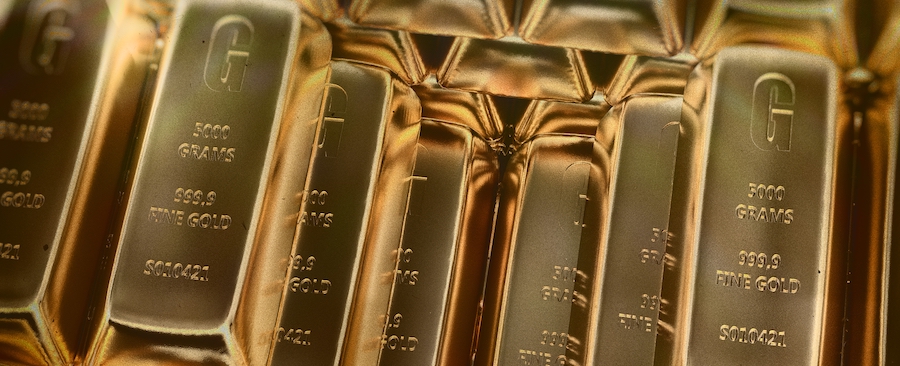The gold standard is defined as “a commitment by participating countries to fix the prices of their domestic currencies in terms of a specified amount of gold.
National money and other forms of money (bank deposits and notes) were freely converted into gold at the fixed price,” according to the Encyclopedia of Economics and Liberty. Therefore each country’s money supply is tied to the gold reserves it holds. Let’s take a look at what that actually means. This month’s Dollars + Sense is going for the gold- helping you understand the financial speak behind it and what that means for Lebanon.
Currency Backed by Gold Countries under the gold standard were able to freely convert their money into gold at the fixed price. In this case countries will be setting a price for gold; each unit of the country’s currency will be exchanged with gold. The gold standard provided a security system against inflation, and allowed a higher level of trust in the currencies redeemed in gold. The gold standard allowed the monitoring of a country’s money supply.
Lebanese Lira Backed to Gold?
After its independence in 1943, the Lebanese economy was characterized by a young Lebanese pound, the value of which was a concern to the Lebanese authorities. After the Bretton Woods agreement was implemented, the European currencies were linked to the gold-backed Dollar. As a result, Lebanese authorities purchased a lot of metal to improve the value of the Lebanese pound at the price of $35 per ounce. When the United States delinked its currency from the gold standard, the Lebanese Parliament ruled out the possibility of selling the gold without its approval. This decision could have resulted in the devaluation of the Lebanese currency after the civil ware specially that acting Prime Minister Salim el-Hoss’s 1987 proposal to sell 20 percent of the gold reserves in exchange of $800 million was declined. The Lebanese gold reserves reached $17 billion in August 2011. Many Lebanese economists and policymakers face the dilemma of selling the gold reserves to pay off the debt, however, they all agreed on keeping the gold reserves untouched. This dilemma resulted from the $52 billion public debt that is draining half of the yearly government revenues. Liquidating the gold reserves will allow the Lebanese government to relieve 31 percent of its debt and invest nearly $1.3 billion in public spending. The problem that arises in this case is the absence of confidence in the Lebanese policymakers and their uses of the collected money, not to mention that the gold reserves of the country were not meant to be accumulated to pay off the debt. The gold reserves made the Lebanese pound a strong currency facing the different crisis it went through under the rigid fixed exchange rate system. This as well represents a threat, as the current strength of the Lebanese pound is based on the high price of gold. Questions crop up like would the Lebanese monetary authorities partially or fully liquidate the gold reserves? How would these authorities maintain the credibility of the Lebanese pound under such continuous political wavering? Would it be better to default on the debt without liquidating the gold reserves? Previous experience has proved that many countries liquidated their gold reserves and defaulted on their debt, while others defaulted and returned to normalcy. In the era of financial crisis, it may be recommended to keep the gold reserves for desperate measures.
The Bretton Woods system of monetary management established the rules for commercial and financial relations among the world’s major industrial states. The Bretton Woods system was the first example of a fully negotiated monetary order intended to govern monetary relations among independent nation-states. (Wikipedia, 2011)
Dropping the Bar
During the World War I, the Gold Standard broke down due to the inflationary finance and was replaced by the Gold Exchange Standard from 1925 to 1931. Under the Gold Exchange Standard all countries could hold reserves in gold, dollars or other currencies, except in the cases of United States and United Kingdom whose reserves were only in gold. In 1931, due to the large outflows of gold and capital, the United Kingdom decided to drop the Gold Exchange Standard and as a result the Standard broke as well. Bretton Woods1 system was installed between 1944 and 1971. During this period, the different countries backed their currencies to the dollar or to the pound but the United States redeemed its currency in gold. The gold standard was abandoned in the United States in August 1971 by President Richard M. Nixon. Even after abandoning the gold standard, many countries find it interesting upon inflationary pressures.
Keep’em or Lose’em?
Gold is tangible, difficult to carry around unlike money, which limits robberies, and retains its value over a long period of time. Gold standards were adopted mainly for their characteristic of limiting inflation. When countries are under gold standard they need to back each additional printed dollar with gold, and as gold is not easily produced, these countries will benefit from low inflation. Another plus of the gold standard is to limit the intervention of the government and Central Bank in the money supply. Prosperous economies with high productions were directly rewarded when the country was under the Gold Standard. Higher production led to higher exports of goods, allowing the country to accumulate a larger gold reserve. In this case printing more money will boost investments in the profitable industries, leading to higher growth. On the other hand, countries under the gold standard did not have flexible monetary policies, which limited the government’s economic power. Governments use their monetary policies to fight deflation and recession. When governments aren’t under the gold standard they can print money to cover their debt, which leads to the undesirable circumstance of inflation. Major gold discoveries will have a havoc effect on the economy, countries won’t be richer but money supply will automatically increase, leading to inflationary pressures. In some cases, especially when economies are growing, it is healthy to allow the money supply to grow the level of production. Recently world economies are changing due to globalization, international shocks and other factors. If these economies are under a gold standard, it would be very difficult to keep the exchange rate stable, and the gold standard is considered an impediment to international trade and investment. In 1930, the gold standard was first questioned as the Unites States observed the gold standard but sunk into the Great Depression. It is important to note that the Great Depression was not only caused by the inflexibility of the monetary policy, many other factors led to this drastic situation, but the gold standard was a contributing factor.





